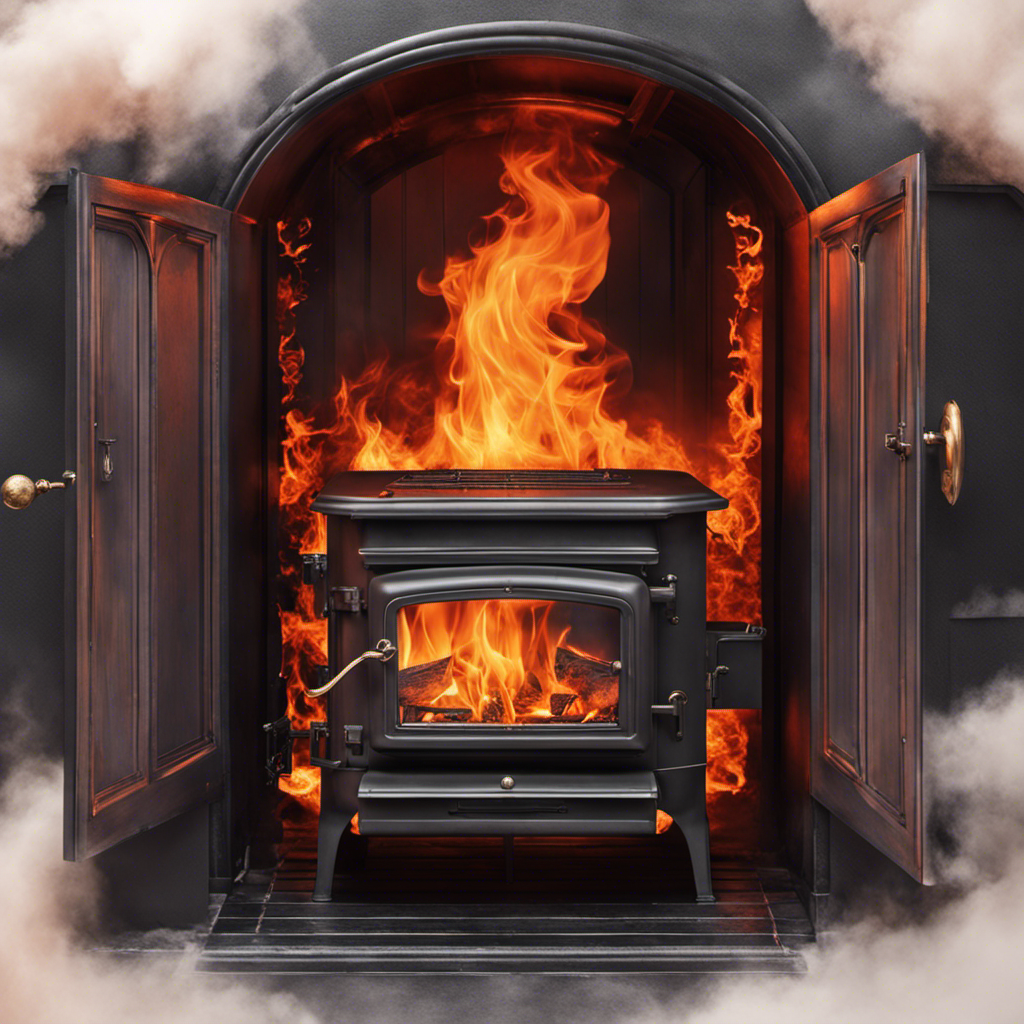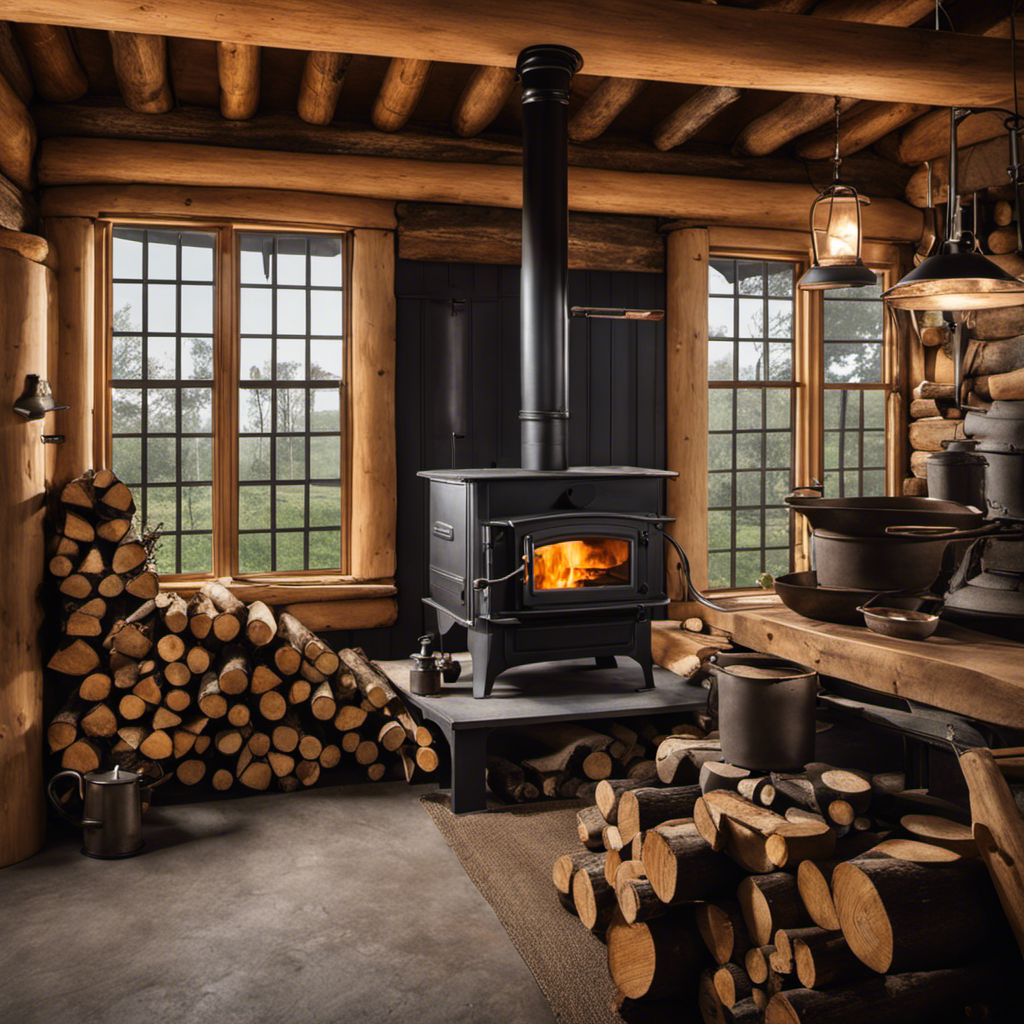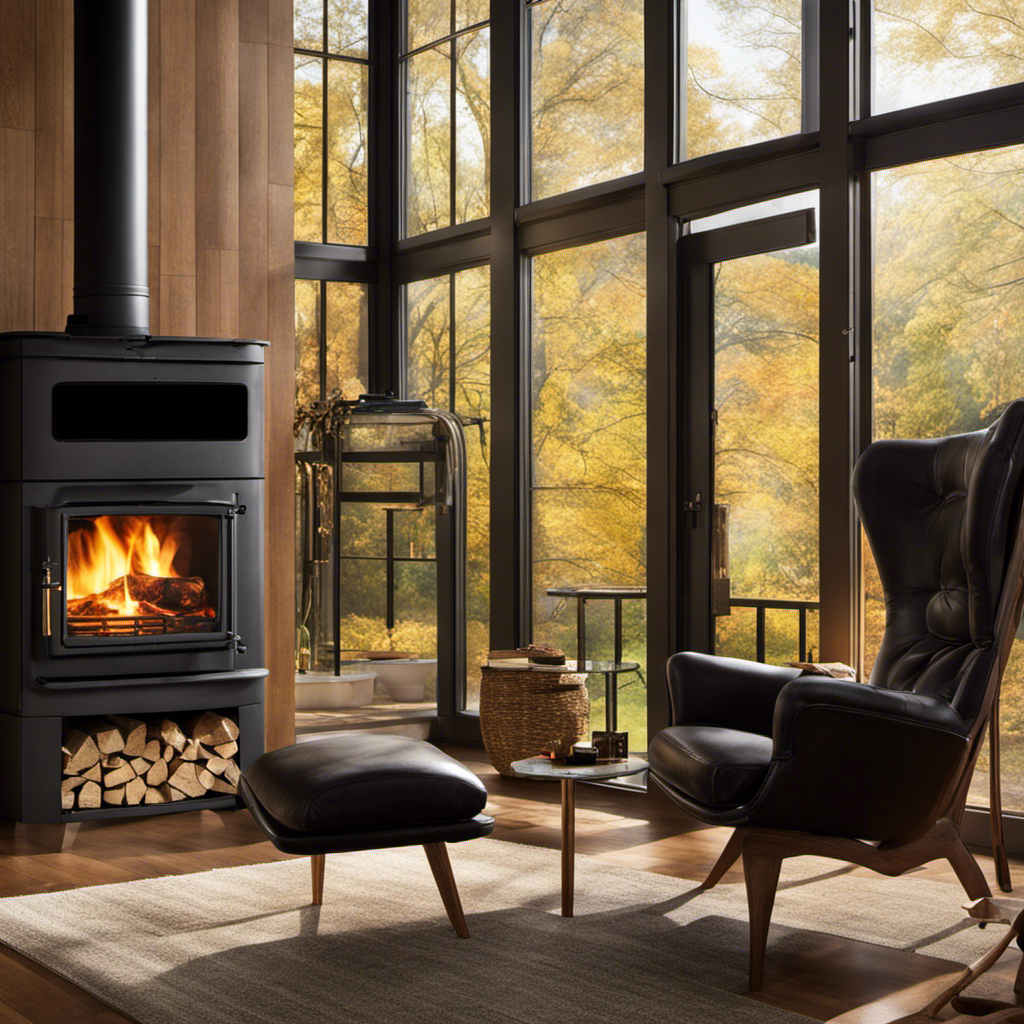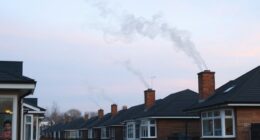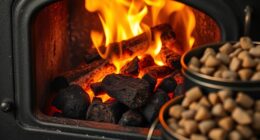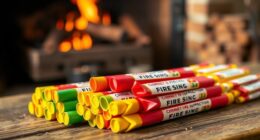As a seasoned wood stove user, I have learned to identify the dangers associated with overfiring.
Picture this: crackling flames dancing in the hearth, but the intense heat begins to exceed safe levels.
This phenomenon, known as over firing, can have disastrous consequences.
In this article, we’ll delve into the signs, dangers, and best practices to avoid over firing your wood stove.
Join me as we explore the intricate balance between warmth and safety in the world of wood stove heating.
Key Takeaways
- Over firing occurs when too much heat is generated, exceeding the stove’s design limits.
- Signs of over firing include excessive smoke, a strong smell of burning, and a glowing red or white hot stove.
- Over firing can lead to increased risk of fire, carbon monoxide poisoning, and damage to the stove’s components.
- To avoid over firing, maintain proper ventilation, use the proper fuel, regularly maintain and inspect the stove, and follow manufacturer’s recommendations for operating temperatures.
Understanding Over Firing: The Basics
I’ve learned that understanding the basics of over firing is crucial to prevent damage to my wood stove. Over firing occurs when too much heat is generated, exceeding the stove’s design limits. One of the most common mistakes people make is burning too much fuel or using highly flammable materials, causing the temperature to skyrocket. This can lead to warping or cracking of the stove, compromising its structure and efficiency.
Another mistake isn’t providing proper ventilation. Without adequate airflow, the excess heat accumulates inside the stove, increasing the risk of overheating. To prevent over firing, it’s important to follow the manufacturer’s guidelines on fuel types and quantities. Additionally, ensuring proper ventilation by opening the damper or using a chimney fan will help dissipate the excess heat and maintain a safe operating temperature.
Signs and Symptoms of Over Firing
During my research, I discovered that signs and symptoms of over firing can include excessive smoke, a strong smell of burning, and a glowing red or white hot stove. These indicators are crucial in preventing damage to your wood stove and ensuring its safe operation.
Excessive smoke is a clear sign that the stove is being over fired, as it indicates inefficient combustion and the release of harmful pollutants. A strong smell of burning is another warning sign, suggesting that the stove is operating at an excessively high temperature. Lastly, a glowing red or white hot stove is an unmistakable indication of over firing.
If you notice any of these signs, it’s important to take immediate action and implement troubleshooting solutions to prevent further damage and ensure the safety of your wood stove.
Transition: However, the dangers of over firing your wood stove extend beyond just the potential damage it can cause.
The Dangers of Over Firing Your Wood Stove
One must be cautious of the dangers that come with over firing a wood stove, as it can lead to increased risk of fire and release harmful carbon monoxide into the living space. Over firing occurs when the stove is operated at excessively high temperatures, surpassing the manufacturer’s recommended limits. This can result in several detrimental effects, including damage to the stove’s components, decreased efficiency, and potential harm to the occupants of the dwelling.
To emphasize the importance of preventing accidents and long-term damage, let’s take a closer look at the potential hazards of over firing a wood stove:
| Dangers of Over Firing | Risks | Consequences |
|---|---|---|
| Increased Fire Risk | Ignition of flammable | Property damage |
| materials nearby | Personal injury | |
| Release of Carbon | Carbon monoxide poisoning | Headaches, dizziness, nausea, |
| Monoxide | and even death | |
| Decreased Efficiency | Inefficient burning | Wasted fuel and higher heating costs |
| Environmental impact | ||
| Damaged Stove | Cracks, warping, and | Costly repairs or replacement |
| Components | deterioration |
In order to avoid these dangers and maintain a safe and efficient wood stove operation, it is crucial to follow best practices for preventing over firing.
How to Avoid Over Firing: Best Practices
To ensure safe and efficient wood stove operation, it’s important to follow the best practices for avoiding over firing.
Over firing occurs when the stove is operated at temperatures higher than recommended by the manufacturer. This can lead to a variety of issues, including damage to the stove and potential hazards.
One of the key ways to avoid over firing is by maintaining proper ventilation. This means ensuring that the stove is properly installed with adequate clearance to combustible materials and that the chimney is clean and in good condition.
It’s also important to use the proper fuel, such as seasoned wood, to prevent excessive heat buildup. Regular maintenance and inspection of the stove can help identify any potential issues and ensure optimal performance.
Maintaining Optimal Temperature: Tips and Tricks
As I learned, maintaining optimal temperature can be achieved by properly adjusting the air vents in the wood stove. This is crucial for maintaining efficiency and preventing damage.
Here are three tips and tricks to help you maintain the perfect temperature in your wood stove:
-
Adjust the air vents: By opening the air vents, you allow more oxygen into the stove, increasing the temperature. On the other hand, closing the vents restricts the oxygen flow, lowering the temperature. Finding the right balance is key to maintaining optimal temperature.
-
Use dry and seasoned wood: Wet or unseasoned wood can create excessive smoke and reduce the stove’s efficiency. It’s important to use dry and seasoned wood, as it burns more efficiently and produces more heat.
-
Regular cleaning and maintenance: A clean wood stove is more efficient at maintaining temperature. Regularly clean the stove, removing ash and debris, and inspect the door gaskets for any damage or leaks.
Conclusion
In conclusion, over firing a wood stove can have serious consequences for both your safety and the longevity of your stove. It’s important to understand the signs and symptoms of over firing, as well as the dangers it poses.
By following best practices and maintaining optimal temperature, you can avoid over firing and ensure a safe and efficient operation of your wood stove.
Remember, a well-maintained stove radiates warmth and comfort, like a cozy hearth on a chilly winter evening.

